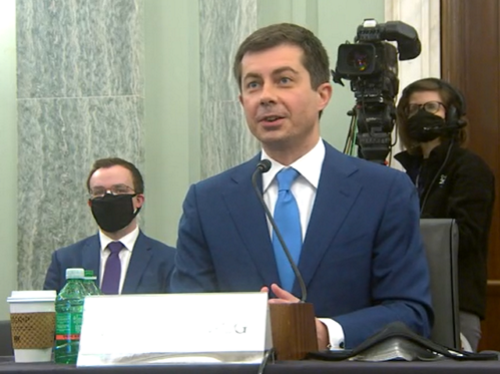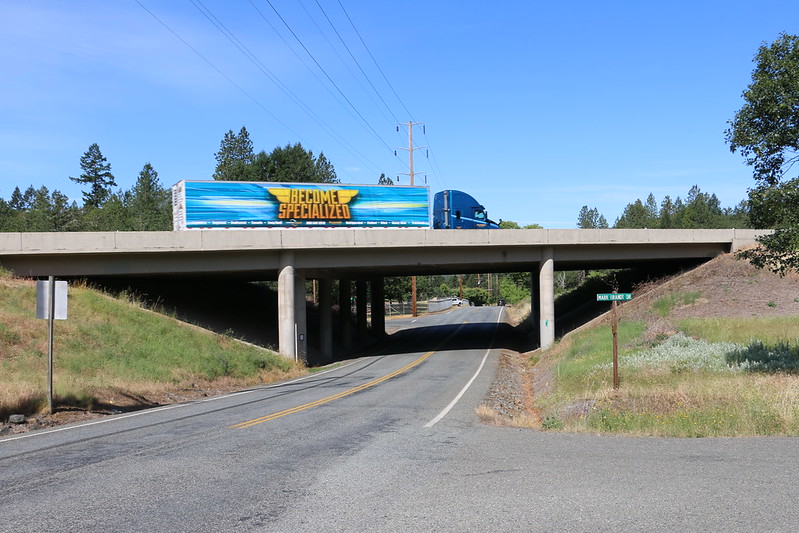FEDERAL ACTION
AASHTO Sets 2021 Transportation Policy Priorities – AASHTO Journal
Federal court strikes down Trump administration’s rollback of Clean Air Act – Associated Press
Buttigieg Sees ‘Generational Opportunity’ to Transform the Nation’s Infrastructure – New York Times
Can Joe Biden get infrastructure done in 2021? – FreightWaves
Environmentalists challenge EPA change that allows Florida to control wetlands development – Sun-Sentinel
COVID-19
ACI Report: COVID-19 Pandemic Will Cost Airports Billions – AASHTO Journal
An unexpected COVID-19 victim – Recycling – Monterey Herald
Oklahoma Department Of Transportation Expecting $150M From Latest COVID Relief Package – KWGS
Could a COVID-19 surge lead to shutdowns at L.A. ports? Officials plead for dockworker vaccines – Los Angeles Times
U.S. Department of Transportation Announces $15.8 Million in Grant Awards to 37 Projects Nationwide to Improve Operational Efficiency of Transit Agencies Affected by COVID-19 Public Health Emergency – FTA (Press release)
INFRASTRUCTURE RESILIENCE AND SUSTAINABILITY
Infrastructure Investment Key to Economic Recovery, Groups Say – AASHTO Journal
‘Notorious’ Port Authority Bus Terminal May Get a $10 Billion Overhaul – New York Times
Philadelphia renews commitment to fighting climate change – KYW
America needs a climate adaptation strategy – The Hill (Opinion)
3 Ways the Biden Administration and Congress Can Lower America’s Flood Risk—and Costs – Pew
CTDOT Releases Updated Five-Year Capital Plan; Includes $9.7 Billion in Investments in Public Transportation, Roads, Bridges, Bicycle and Pedestrian Improvements – Connecticut DOT (Press release)
AIR QUALITY
New York City Ranked Top for Carbon-Friendly Transportation – Bloomberg Green
Toyota Motor Company to Pay $180 Million in Settlement for Decade-Long Noncompliance with Clean Air Act Reporting Requirements – US Department of Justice (Press release)
ENVIRONMENTAL JUSTICE
Why the Environmental Justice Movement Should Think Locally – New Republic (Opinion)
NATURAL RESOURCES
2021 Indiana Green Expo to go online with live and on-demand sessions – Purdue University
Wetlands permit decision due on natural gas pipeline in Somerset County – County Times
And finally… Network Rail on lookout for rare species with new technology – Scottish Construction Now
CULTURAL RESOURCES
Nominations Sought for Outstanding Achievements in Historic Preservation – Washington State Department of Archaeology and Historic Preservation (Press release)
HEALTH AND HUMAN ENVIRONMENT/ACTIVE TRANSPORTATION
Brattleboro coalition advocates for safer infrastructure for cyclists, pedestrians – Brattleboro Reformer
Safety campaign to emphasize law requiring motorists to move over for cyclists – KLAS-TV
Littleton to improve pedestrian safety with CDOT grants – Littleton Independent
Virginia Beach Trail could be ‘life-changing’ when complete – WAVY-TV
When Commuting Comes Back, the E-Scooters Will Be Ready – CityLab
TRB RESOURCES/ANNOUNCEMENTS
TRB Webinar: Options for Reducing Lead Emissions from Piston-Engine Aircraft – TRB
TRB Webinar: People Movers and Shakers – Quality of Life in Airport Communities – TRB
Webinar: Transportation Inflection Reflection – Shared-Use Mobility Center
Q&A: IBTTA president Mark Compton – ITS International
Equity Summit – Smart Growth America (Announcement)
FEDERAL REGISTER NOTICES
Streamlining U.S. Fish and Wildlife Service Permitting of Rights-of-Way – Fish and Wildlife Service (Proposed rule)
Delegation of Authority to the Commonwealth of Virginia To Implement and Enforce Additional or Revised National Emission Standards for Hazardous Air Pollutants Standards and New Source Performance Standards – EPA (Notice of delegation of authority)
Delegation of Authority to the State of West Virginia To Implement and Enforce Additional or Revised National Emission Standards for Hazardous Air Pollutants Standards and New Source Performance Standards – EPA (Notice of delegation of authority)
Written Determination: Bicycle Use on Visitor Center Connector Trail at Arches National Park – National Park Service (Notice)



